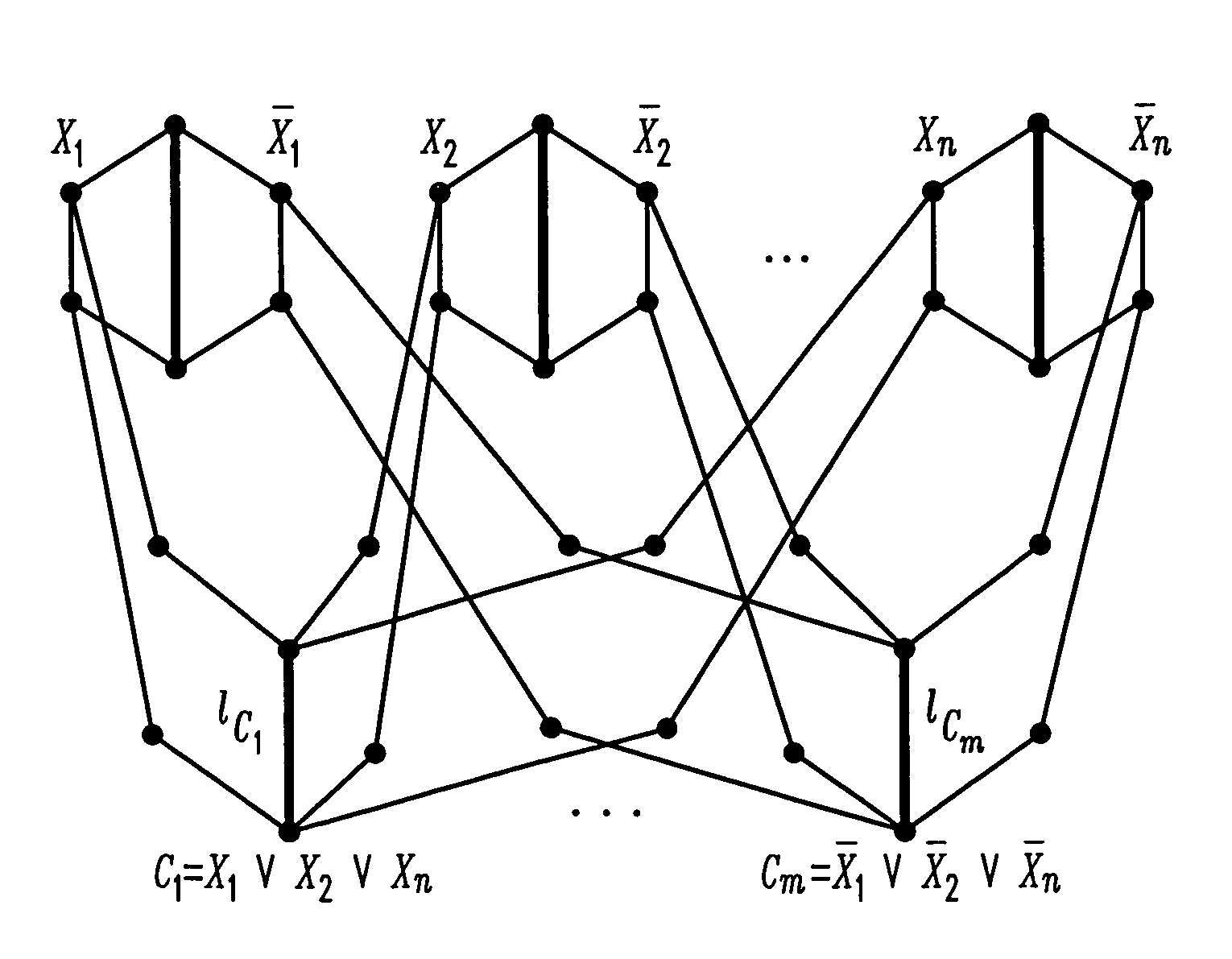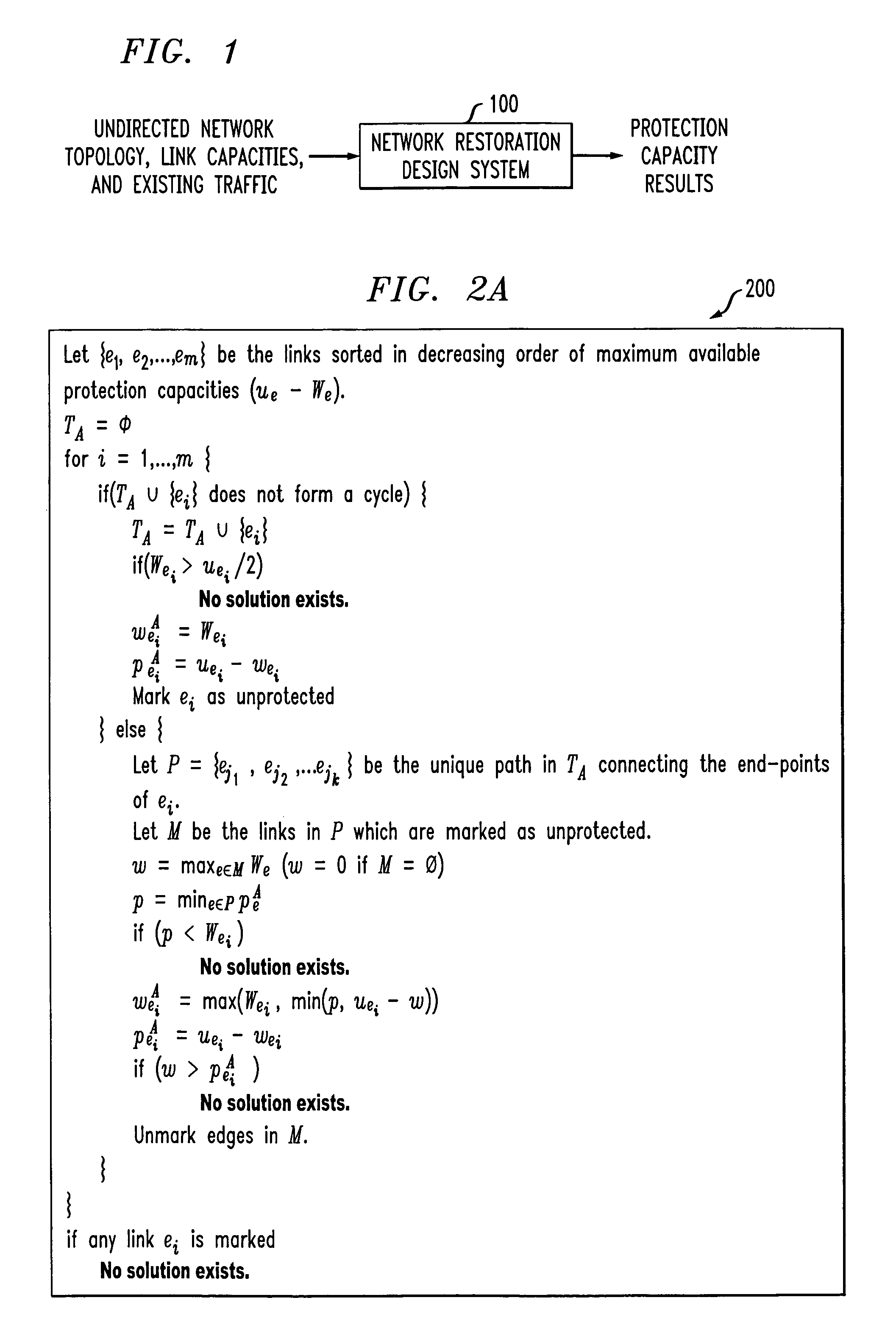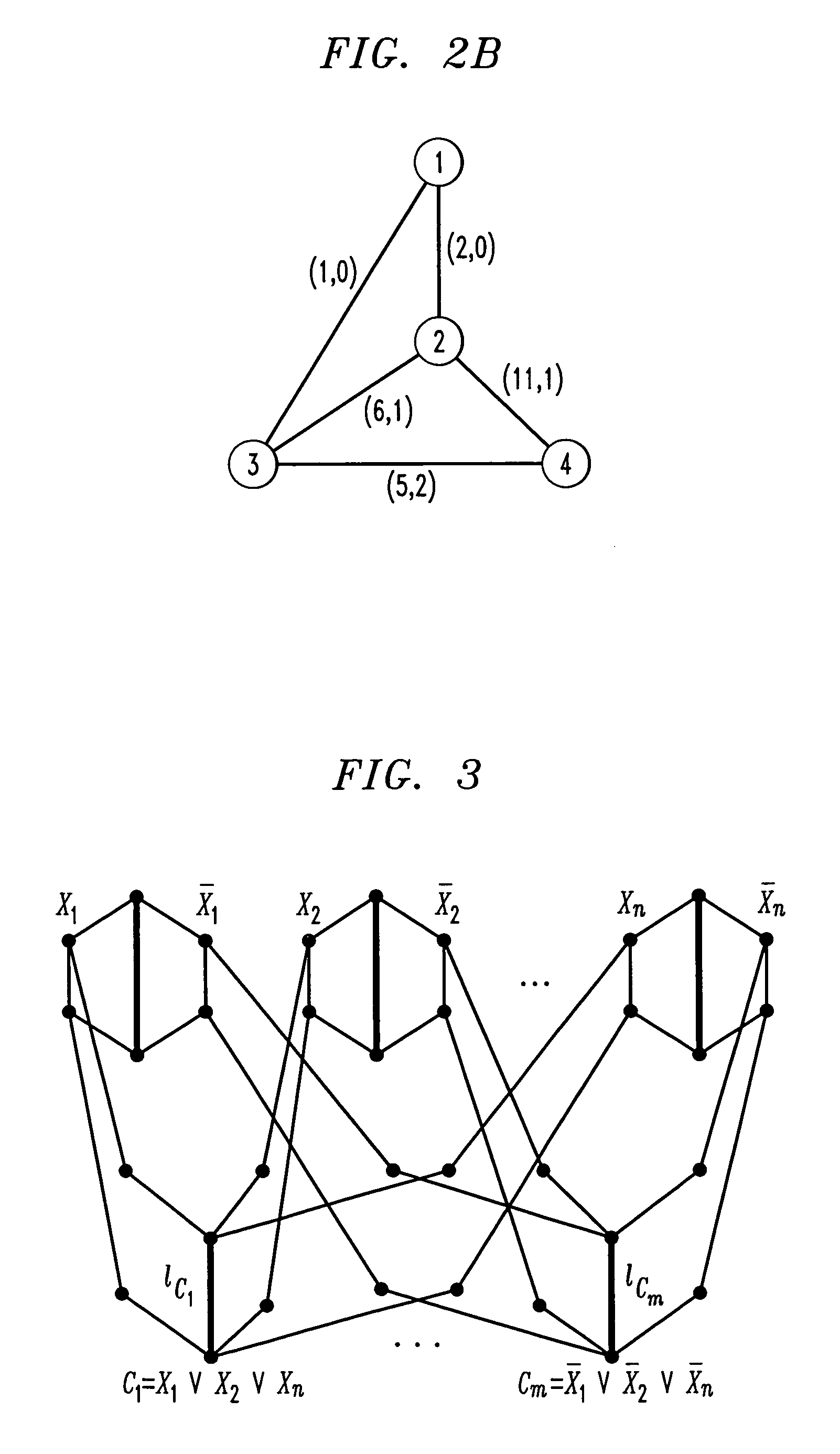Method and apparatus for designing networks to support fast restoration
a network and fast technology, applied in the field of network design techniques, can solve the problems of significant pre-provisional protection capacity, limited topology, and the cost of reserving at least half the total protection capacity, and achieve the effect of improving network design techniques and fast restoration
- Summary
- Abstract
- Description
- Claims
- Application Information
AI Technical Summary
Benefits of technology
Problems solved by technology
Method used
Image
Examples
case 1
[0047, for all e ε TA: Note that G−e is connected, because otherwise link e would stay marked at the end of the algorithm in which case no solution is returned by the algorithm. Thus, there is at least one cross link ec=(uc, vc), which, together with the unique path in TA between nodes uc, and vc, (excluding link e), forms a backup path for e. Without loss of generality, let ec, be the first cross link considered by the algorithm, such that adding it to TA results in a cycle C containing link e. Consider the path Pe=C\{e}. The link ec has been assigned the least protection by the algorithm among the links on Pe. Note that link e is marked (hence in M) at the time when ec is considered by the algorithm. Thus, when link ec is considered by the algorithm, we must have pecA≧w≧We=weA implying that Pe is a valid backup (detour) for link e.
case 2
[0048, for all e∉TA: The backup path Pe for link e is the unique path in TA connecting e, which always exists. The links on this path have enough protection because the algorithm sets the working traffic weA of link e to at most mine′εPe pe′A.
[0049]Also, it is to be appreciated that, if a feasible solution exists, the algorithm will return a solution. The algorithm will not return a solution in 4 cases.
[0050]Case 1, there exists a link eεTA, We>ue / 2: If a tree link e has We>ue / 2, then no solution exists. This is because, the maximum protection capacity available on e (ue−We) is strictly less than ue / 2. If there was a solution, then there must exist a path Pe in G−e between the end points of e all whose links e′ have maximum protection capacity available ue′−We′>ue / 2. But then TA is not a maximum spanning tree based on the maximum protection capacity available on the links, a contradiction.
[0051]Case 2, there exists a link ec.∉TA, pe: The proof for this case uses arguments similar to...
case 3
[0052, there exists a link ec∉TA, w>pecA: Note that in this case M≠∅. Let ec,=(uc, vc) and let Pec be the unique path in TA connecting nodes uc and vc. Let eεM be a marked link on the path Pec with w=We=weA, at the time when ec is considered by the algorithm. Let Pe be a feasible detour for link e. Thus, the maximum protection capacity available on all links e′ on Pe is ue′−We′≧w. Also Pe∪{e} forms a cycle in G, thus at least one link on Pe is a cross link for TA, that forms a cycle containing link e when added to TA. This link must have been considered before link ec since it has strictly more maximum protection capacity available on it. Hence, link e must already be marked before link ec is considered, a contradiction.
PUM
 Login to view more
Login to view more Abstract
Description
Claims
Application Information
 Login to view more
Login to view more - R&D Engineer
- R&D Manager
- IP Professional
- Industry Leading Data Capabilities
- Powerful AI technology
- Patent DNA Extraction
Browse by: Latest US Patents, China's latest patents, Technical Efficacy Thesaurus, Application Domain, Technology Topic.
© 2024 PatSnap. All rights reserved.Legal|Privacy policy|Modern Slavery Act Transparency Statement|Sitemap



